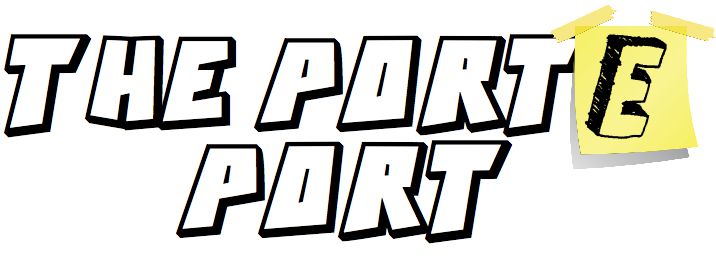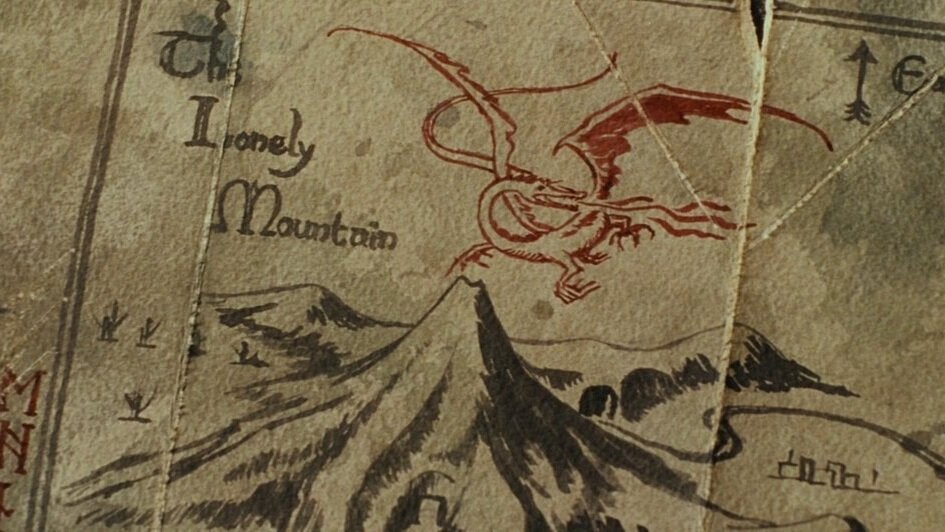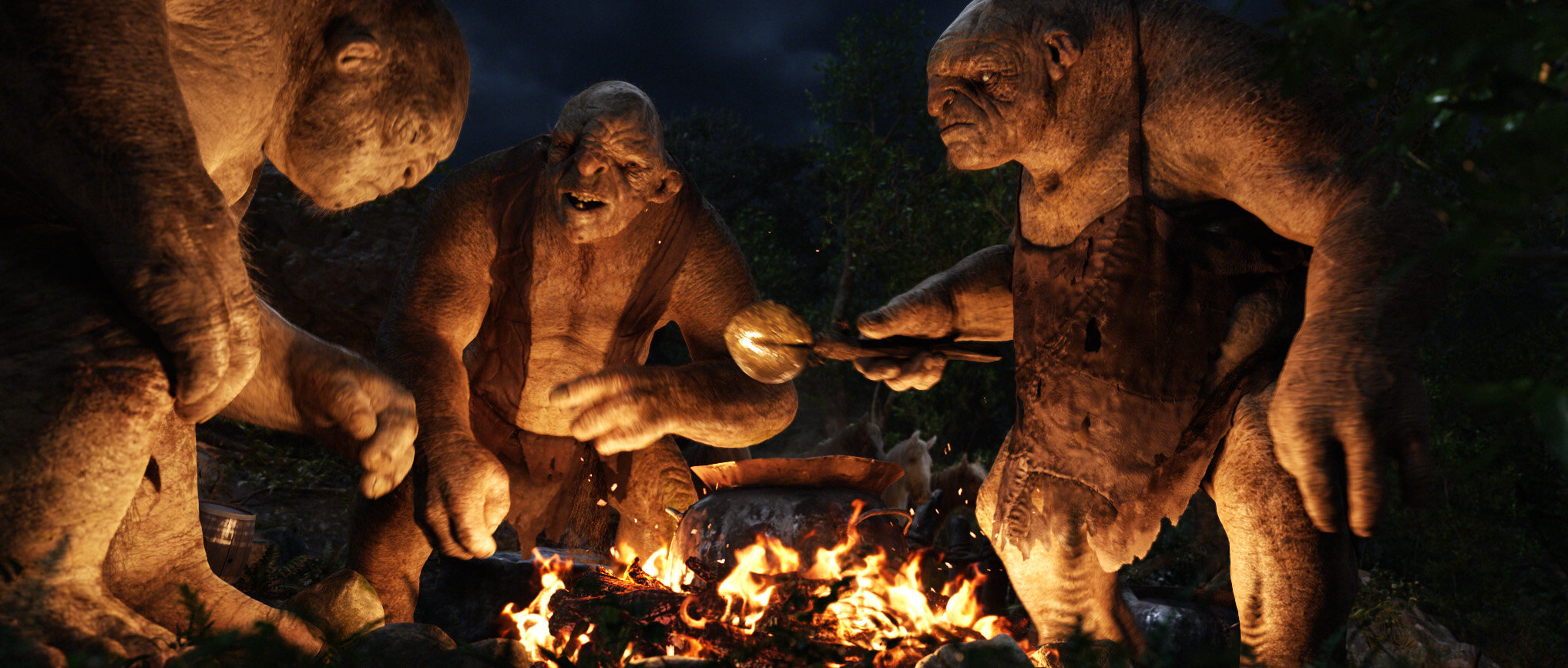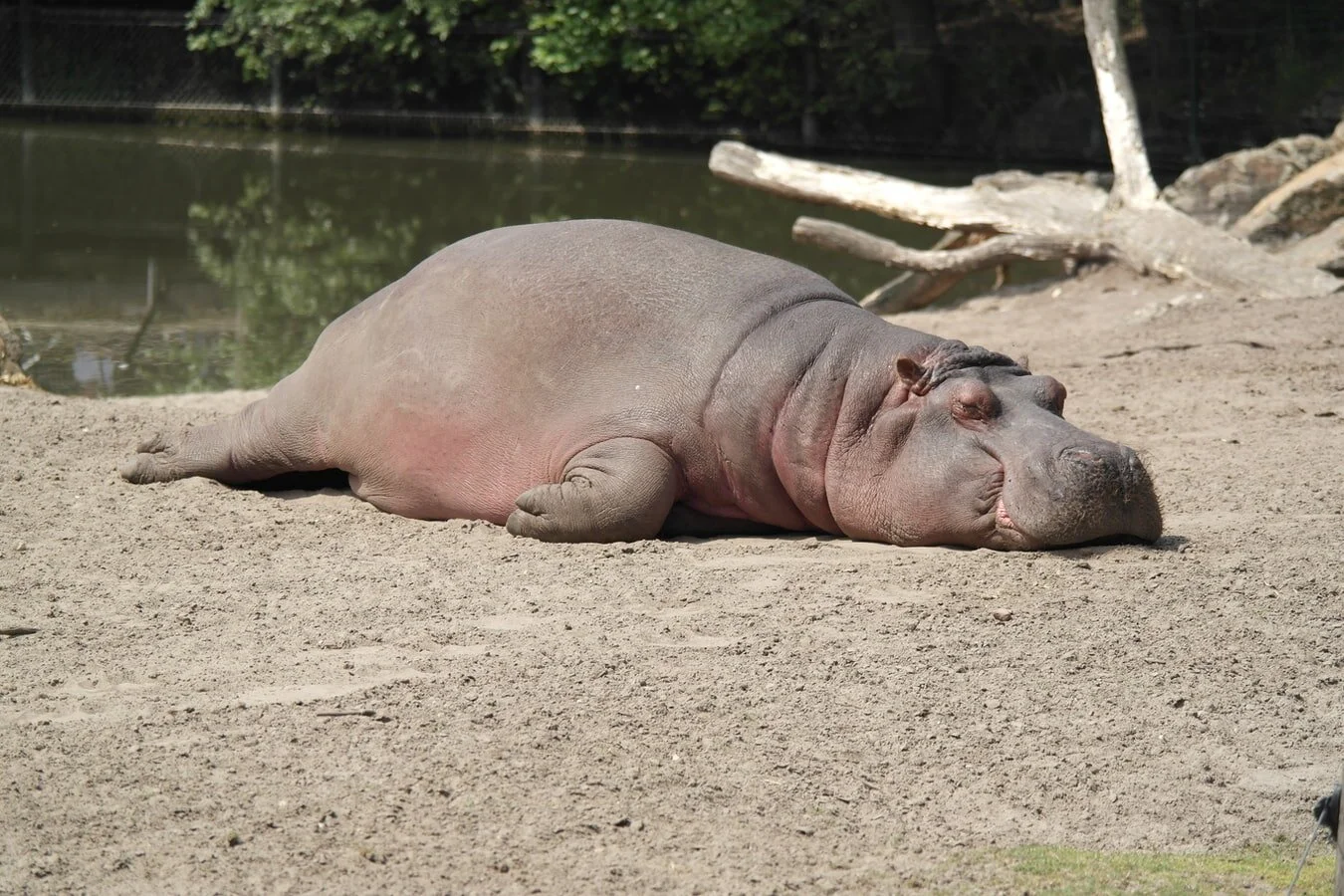Tolkien Tuesday: The Hero's Journey and The Hobbit
How do you tell an epic story?
For writers influenced by stories like The Lord of the Rings and Star Wars, it’s a question that floats around in the back of our minds.
We want to tell a story that influences others just like we’ve been influenced.
Is it the world-building that creates these epic tales?
Or perhaps the magical objects and kick-ass lightsabers that do the trick?
Or maybe the mystical side of it all. Who wouldn’t want to bring the remote closer to themselves with The Force?
It’s none of those things. They all work to make a great story, sure, but it’s missing the core.
A great story comes down to a great character.
If you want to tell epic tales, you need to create a character to match.
And there’s a guide!
That’s where the Hero’s Journey story structure comes in. Then we will look at an example of each step highlighted by a hero so epic he didn’t even need to be over 4 feet tall.
*This article is as long as a Hero’s Journey, to help you can use the table of contents to skip to the place you want.*
Table of Contents:
If you want to dive into more geeky novel writing tips, be sure to sign up for my newsletter at the bottom. I would love to geek out together.
What is the Hero's Journey and Why You Should Care
The Hero’s Journey is a template for your story. It is a set of steps your protagonist goes through to reach the goal of their story. Then, they come back changed.
Or dead, I guess. But...I would consider that changed. Although, the classic structure does call for the hero to return from the adventure with something.
The Hero’s Journey is as old as storytelling itself. The term was popularized and explored by Joseph Campbell in his famous work The Hero With A Thousand Faces, published in 1949.
I know what you may be thinking…
You’ve heard this all before.
You don’t want to use any kind of story structure for your novel.
Your story is wild and free and full of complexities this basic bitch formula couldn’t handle.
But have you tried it?
Here’s the thing about story structures: they are the skeleton of your book. They work because they give you something to build up from.
If you practice the basics over and over and over, that’s when you master something. You have to play that same scratchy beginner’s song if you are learning violin that features at every kid’s first recital before you can be first chair in an orchestra.
Epic tale after epic tale uses a version of this structure. You would be hard-pressed to find stories that didn’t hit at least some of these plot points.
And the day this article is released is Hobbit Day. And a Tuesday! In celebration of the best Hobbit of all time, and the most epic Tolkien Tuesday yet, we will break down The Hero’s Journey with the plot of The Hobbit.
So grab your handkerchiefs before running out the door, and let’s see how the Hero’s Journey can help our own stories.
Pin this!
The Steps of the Hero's Journey (By Bilbo Baggins)
The Hero’s Journey breaks down into 12 steps. Although originally it was 17 steps, some of which I’ll mention here because Tolkien hit some of them.
Can we appreciate that Tolkien loved mythology so much that he created a story that almost perfectly breaks down the Hero’s Journey before Campbell popularized it?
I mean, I guess he was kind of a professor and all.
1. The Ordinary World
“Look, I’m not going to buy your cookies man.”
We begin our tale in the everyday world.
Bilbo is smoking his pipe, watching the day go by without a worry in the world.
Then Gandalf shows up to ruin everything, precisely as he means to.
Even in their back and forth conversation, we get a sense of Bilbo’s character and the life he lives. He is flustered even by a strange conversation, let alone strange adventures.
Bilbo doesn’t like adventure. But also doesn’t like being rude and accidentally invites Gandalf for tea, which makes Bilbo worry even more.
Importance: Your reader needs to get a sense of the ordinary world.
Before the call to adventure and the quest, what are your protagonists fighting for? What’s at stake?
We need to see where our characters come from so we can see how much they grow. It doesn’t have to be long in your story. You don’t want to bore your reader right out the gate.
Here, even the conversation between Gandalf and Bilbo serves as tension as we get a sense of who Bilbo is.
2. The Call of Adventure
Me at a party trying to figure out when I can escape.
Oh, Gandalf comes for tea all right, and brings 13 Dwarves along with him.
From what we already know of Bilbo, we understand this is a pain in the ass for him. This is too close to being an adventure as Dwarves literally pile into his home.
The narrator’s voice even breaks the fourth wall to get us to imagine how uncomfortable this would be (and not for the last time.)
Then the Dwarves start talking about their quest and how they need a Burglar and somehow think Bilbo is their man...er, Hobbit.
As the Dwarves play the Old Town Road of their people, singing about dungeons deep and caverns old, Bilbo hopes this all goes away.
But not before a little adventure is stirred in him, giving us a glimpse of his potential.
Importance: No story can start without a push to adventure.
I may want to live in the Shire, but I don’t want a story about someone chilling on their front porch all day.
And let’s be honest, the Dwarves wouldn’t have made it out of Mirkwood without our terrified little Hobbit whose biggest worry in life is broken plates.
3. Refusal of the Call
I said refusal…REFUSAL!
Not every hero is Superman willing to fly off into every danger.
And in Bilbo’s case, the refusal of the call is his characterization.
He thinks this whole quest thing has been solved for him, waking up to an empty house.
Bilbo begins a normal day like a frat bro who just needs to get rid of the hangover before cleaning up (even though the Dwarves kindly did most of it.)
When Gandalf comes to see why he hasn’t met them at The Green Dragon to set out for adventure, Bilbo is so flustered he rushes out the door.
His refusal was really hoping he wouldn’t have to refuse. (What a 9.)
Importance: Your hero needs to feel like a real human being.
We want to believe we are all capable of adventure. But, if a wizard showed up at my door with 13 Dwarves and tried to get me signing contracts and making verbal agreements to help these people I don’t know, I would probably say no too.
Refusing the call makes it realistic for your reader. Your protagonist is a normal person with normal concerns. They are relatable.
And if Bilbo (who just wants to relax with an ale and eat cake) isn’t relatable, I don’t know what is.
4. Meeting the Mentor
“Who? Me?”
The hero doesn’t know how to be a hero yet. They need guidance.
Bilbo has technically already met the mentor of this story. Gandalf is wrapped in mystery, strange power, and is a little intimidating.
But, he’s full of knowledge that we’re confident will help all of them.
He guides the group with a plan. He will take them to Rivendell and the Elves, and they will get additional guidance there. With him in the group, we feel a little safer.
Importance: Your hero needs to learn from someone who has been in through the foreign parts of the world first.
That can be both internal and external guidance. Gandalf knows the world and is full of knowledge that Bilbo can’t possibly understand.
Your mentor will help start the transformation of your protagonist. Because that’s what this is all about if you haven’t noticed.
Story is about change.
5. Crossing the First Threshold
“So I says, I says, no…off the internet too! Haaa!”
Speaking of change, it’s time for the hero to cross over into a world they have never known.
The ordinary, familiar world must fall away if your protagonist is going to change. Remember, this can be a good or bad change. Your hero is going to fail along the way too.
And Bilbo is no different.
Bilbo, the party-crashing (even if there isn’t a party) Dwarves, and Gandalf go out into the wide world. That world is dangerous.
With the group cold, drenched in the rain, and miserable, Bilbo scouts a campfire (belonging to trolls) they spot in the distance to prove that he is worth something to the group. You have to give him credit for trying on an adventure he never really wanted to be on in the first place.
Bilbo, unfortunately, is terrible at being a Burglar. He roles a nat 1 on his stealth check and is captured by the trolls, and chaos ensues.
Then the mentor gets to prove himself.
Importance: This is what I like to call the “oh crap” moment of the story.
(Mostly, because I didn’t do my research before looking into the Hero’s Journey and realizing that there was an official name for it.)
This sets up the danger of your story. Whatever hope your hero had of going through with their quest smoothly is smashed to pieces. (Or squished into jelly).
And it’s an excellent moment for characterization. We get to see that even though this quest isn’t his, Bilbo wants to prove himself. We also get to see that the Dwarves are fiercely loyal even with a person they don’t see as worth much to the group.
This scene will establish your protagonist's growth because we get to see their “small beginnings.”
...no pun intended, Bilbo.
6. Tests, Allies, and Enemies
No
Buckle up; this section is a doozie. That’s because this is the rising action, sometimes called complications, of your story. It covers a lot of territory.
Let’s break it down section by section, and I’ll have a couple of bonuses because The Hobbit follows some of Joseph Campbell’s original 17 points of the Hero’s Journey.
(And before you go light me up in the comments, yes I already mentioned that Tolkien wrote The Hobbit before Cambell’s famous work.)
–Allies: Let’s start here because right after the trolls, the group meets the Elves.
Allies are important to your story because they offer help to your hero. They can provide gifts, guidance, or just a place to lay their weary head for a bit.
For Tolkien, that means Elves. He loves a good hang with Elves.
Elrond gives the group some wise insights, and they all find rest there.
Later, the group will meet Beorn. He’s essentially the Bounty man, but also can turn into a bear. Man, Bounty is tough!
He makes supplies for them to get through the Mirkwood Forest that is full of dangers. He also gives them advice for staying alive (always nice to have) and helps them in the end. A damn good ally!
The Eagles also represent this point for the Hero’s Journey. They help the group out of a jam or two, (and then keep doing it for the rest of the series.)
And let’s not forget the Men of Laketown. They give the Dwarves and Bilbo a royal welcome, and Bard the Bowman does end up slaying Smaug before they become enemies of sorts.
Speaking of…
–Enemies: Every great quest needs obstacles. Every hero needs a bad guy.
The Goblins become enemy number one immediately after the group leaves Elrond and the Elves in Rivendell.
Throughout the story, they are hunted by these Goblins and eventually clash at the end of the story.
The Spiders of Mirkwood also fill this role.
And I didn’t forget the Mirkwood Elves in the Allies section because they actually belong here. They imprison the Dwarves and are kind of a pain in the ass to them for most of the story.
Oh, and let’s not forget the dragon. (It does not do to leave a live dragon out of our calculations, after all.)
Smaug is the ultimate enemy of the group. Huge, fierce, cunning, and breathes fire. Not a great combo to face.
–Trials: This is one of the most essential things in your story.
This will play into your characterization the most. Sure, your enemies and allies will prove fan favorites, but they mean nothing without the trials.
Because the trials have a deeper meaning.
Bilbo must be challenged, and he can’t always have the Dwarves save him. That wouldn’t be very heroic, and it wouldn’t test our protagonist properly.
The first major trial for Bilbo comes when he is alone in Goblin Town.
–BONUS The Belly of the Whale: This is one of the OG stages from Joseph Campbell, and Goblin Town is the perfect representation.
Gimme dat OG Bilbo!
Your hero must make choices on their own and is in an utterly dangerous place.
Your hero will go through a metamorphosis at this point. The beautiful heroic butterfly that comes out the other side is utterly changed by their ordeal. (Or the emotionally wrecked, now needs some serious therapy, hero.)
This is the point of no return for your character. The trial that takes them entirely into the other, strange, adventurous world. They can’t go back now.
More than likely, there will be more than one trial in your story.
Poor Bilbo has a few.
After the Goblins, Bilbo will face another moment of being completely alone. Spiders capture his friends, and he now must run INTO danger to free them. Goblin Town was sheer survival. Now he has to come through for his friends.
Then he has to figure out how to free all of his friends from the Elves.
And get them to Laketown in one piece.
And…
You know what? Gandalf was right after all in making Bilbo join.
And that is what trials in your story are all about. Showing how much your character is changing and growing.
–BONUS Supernatural Aid: Another of the original 17 steps in the Hero’s Journey becomes the entire point of The Lord of the Rings.
Bilbo finds The Ring. He doesn’t know the consequences of it yet, but it’s kind of going to play a major role from here on out.
For Bilbo, this means having an advantage to do what needs to be done on the adventure. The only thing standing in his way from being a hero is his own courage. His greatest battle is always with himself.
Importance: Much like this section of the article, this will be the longest part of your story.
Many trials, allies, and enemies will come in and out of the story. They should all have a purpose, and if they don’t drive the plot, they should get cut.
They also open up more plot points in the future, whether in the current story or later in the series. Finding the Ring influences everything that comes after it.
Tension flows out of the trials for your characters. Make them difficult, sacrificial, and the consequences irreversible.
7. Approach to the Innermost Cave
The dragon is a fierce…uh…kinda adorable lizard, actually.
Simply put: this is when your hero is about to enter the most dangerous place in the story.
They aren’t there yet, but it looms like a shadow over what they are doing.
For Bilbo, this is literally a shadow. The Lonely Mountain stands before the group. The entire journey has led up to this.
There’s one last hurdle of the trial stage: figuring out where and how to get into the secret door of the Lonely Mountain.
Then Bilbo realizes he will have to face the long dark of the Dragon’s Lair (the literal innermost cave) alone.
Importance: This is pure tension building.
When your reader knows they are getting closer to the goal, they start leaning forward (so to speak.) You have their complete attention.
Time to deliver.
8. The Ordeal
“Don’t move! He can’t see us if we don’t move!”
All the trails, trinkets, and wisdom gained along the way have led our protagonist to the ultimate test.
This is not going to be your climax. More complications will stem from this, but our hero must do what they set out to do.
Bilbo faces Smaug by himself. The smallest creature and a giant dragon.
Bilbo has earned this moment. That’s super important to remember as you write. We want to see this as readers, and can’t wait to get there, but the journey here makes this moment stick.
If Bilbo didn’t need to fight for himself, or save his friends, it would not be believable that this tiny dude could do this. (Remember, he got overwhelmed just because a few Dwarves showed up at his house unannounced.) He worried about doilies and empty food stores.
Now he faces a dragon. Yeah, you need some in-between there.
Bilbo can handle himself, but he is still vulnerable compared to the danger.
He uses the Supernatural Aid, the insight he learned along the way, and taps into the courage he has built for himself.
Bilbo approaches this situation, not with great fiery swords of +1 to Dragon-kind, but his cunning wit. And it pays off.
Bilbo uses Smaug’s confidence against him and learns of a weakness. It’s this boon that helps Bard the Bowmen slay Smaug. All because Bilbo out-riddled a dragon.
Importance: This is payoff for your reader.
Your reader has been waiting for this moment. Make it worth the wait. Use all of the tools you’ve built into the story.
And set up unforeseen complications.
9. Reward (Seizing the Sword)
When my D&D group gets to the treasure room and I say they find 10 gold.
With Smaug out of his lair thanks to Bilbo’s cunning, the treasure is at hand. (And we can include the knowledge of Smaug’s weakness too. It’s a treasure to Bard, that’s for damn sure.)
The Dwarves, even though they are sure they will still need to fight for it, have their home back.
Bilbo also gets his hands on the most precious treasure of all: the Arkenstone.
It’s a double reward. The Lonely Mountain is theirs, and Bilbo has an advantage now that he has the Arkenstone.
As Thorin falls into greed and selfishness, it’s the one card Bilbo can play to help bring peace later in the story.
But for now, we sweat wondering when Thorin will find out about it and what he will do when he does.
Importance: Rewards have pros and cons.
Sure, they have the treasure, but the dragon attacked Laketown in the process.
And yes, Smaug was slain in the process, but that means something new will happen.
The defenders will want their due share of the treasure.
Your characters need to have something given to them in the process of their ordeal. But this probably has a double-edged effect. That creates more tension in the story and keeps the reader guessing what will happen next.
We thought the dragon would be the biggest problem, but now something entirely new is brewing.
10. The Road Back
“I’m not arming for war, per-say”
The initial goal of the quest is achieved, besides a few new complications. So your hero should go back to normal life, right?
The road back has a roadblock. Or two. Or three. Or 5...armies that is. Oooh. Sorry, long article. You gotta allow a few puns at this point.
Bilbo has done his part, but there’s a major new pain in the ass development. Laketown wants to be rewarded for their part killing the dragon. Thorin is being a dick to everyone. And Bilbo is holding the one treasure Thorin wants.
A battle seems inevitable.
This is the crisis moment of the story. Every good climax needs one. The hero has a choice to make.
For Bilbo, does he stay loyal to the Dwarves even though Thorin is not thinking clearly, or escape down to the Laketown survivors and hope someone listens to him?
Bilbo chooses option 3. He gives the Arkenstone to the Men (and Gandalf) in the hopes there will be peace, then goes back to the Dwarves to stand with his friends.
The journey was really about maturing. We all have desires and ambition, but if those get in the way of other people’s lives, what is it really all for?
Bilbo realizes that, once again, he has to take things into his own hands. And it's not so much a journey into physical darkness this time, but rather an inner struggle.
Importance: Everything hangs in the balance of one last choice.
This is your chance to explore the deeper themes of your story. The physical quest was a trail, yes, but the inner journey is usually the most important part of any story.
Bilbo has grown up. He is making his own choices and exerting his morality on the world around him. This one decision influenced the political landscape of an entire region.
11. Resurrection
That one dude with the pre-order mount.
This is the climax of the story.
Your hero is totally transformed into a new person thanks to the quest.
The enemies from Goblin Town return to enact their revenge. The allies Bilbo has met along the way come back to play their role in this last battle.
The Battle of Five Armies sees all of our protagonists on the line.
Three die, including Thorin. Bilbo’s real resurrection (who symbolically dies after being knocked out in the battle) comes when he says goodbye to Thorin.
Bilbo gets the affirmation he deserves that he made the right choices.
“If more of us valued food and cheer and song above hoarded gold, it would be a merrier world.”
The theme gets fully unveiled that greed, even earned from years of deprivation, doesn’t have a place in the tapestry of a good world.
We must strive to eliminate it.
12. Return with the Elixir
“I knew I forgot to lock the damn door”
The tension has all played out, and finally, the road home is open. The hero can return to everyday life (a changed individual.)
Bilbo finally returns home.
Thematically this works beautifully because Gandalf guides him back home and gets to see a changed Bilbo.
Our wise mentor from the beginning is now more of an equal. Gandalf will always be more experienced and seen as the wise guide to Bilbo, but something is different.
Bilbo is now knowledgeable in the ways of the foreign world too.
He brings that knowledge, the stories, and treasure back home with him. The elixirs, so to speak.
And they change everything.
The Shire isn’t quite the same because stories of Bilbo become the new gossip for years. The knowledge of the outside world grows, inspiring a new generation of young Hobbits.
And the Ring finds a new home. It waits, and a new adventure brews.
Using The Hero's Journey in Your Novel
That’s four hours of work right there
The Hero’s Journey is used time and time again.
And like I said earlier, you will want to break the mold. But make the mold first.
Practice this story structure so that you can add to it. Build it time and time again, so you know how strong the foundation is.
Make the centerpiece of your novel a story about change. That’s what it all comes down to.
And why is this structure so useful?
We all want to think that we can rise to the challenge when a need presents itself. We all want to believe we can make the choices that make ourselves better and our lives more fruitful.
We are all heroes in our own journey, and there’s something spiritual about interacting with the Hero’s Journey in any story.
Take that feeling and bring your characters to life in the most honest way you can–by putting a little of yourself in there.
And if you are reading this on Hobbit Day…then I raise a glass to you.
If not (which is statistically very likely), then I hope you take a moment to enjoy food and cheer and song today.
Keep writing. Keep telling stories.
They are the little glimmer of hope and courage when we find ourselves in our own innermost cave.
If you want even more geeky writing advice, sign up for my newsletter. We will explore the storytelling techniques that makes our favorite movies, books, games, and shows so influential. Check it out:


























